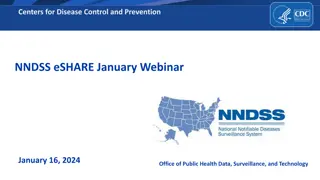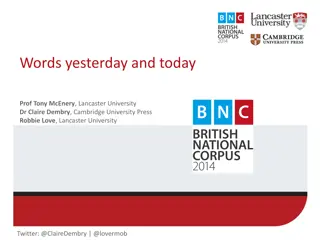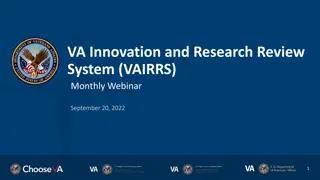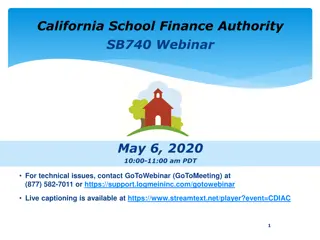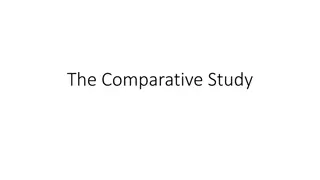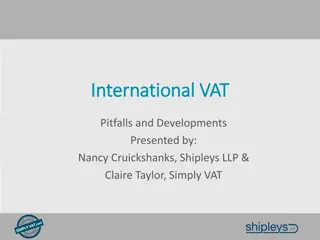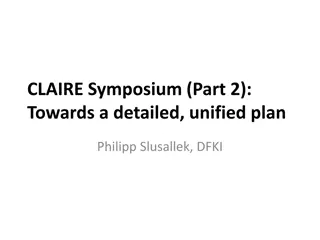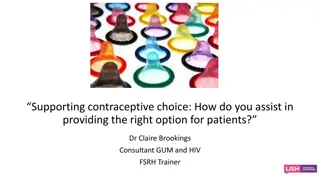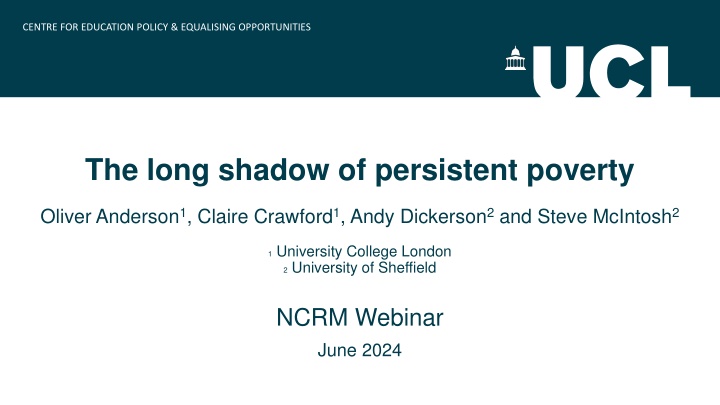
Exploring Education and Labour Market Gaps: Longitudinal Data Analysis
Delve into the long-term impact of persistent poverty on education and labour market outcomes using longitudinal data analysis. Discover insights on individuals' trajectories from school to the workforce based on Free School Meals (FSM) eligibility. Gain a deep understanding of the socioeconomic disparities affecting educational and career pathways up to age 23.
Download Presentation

Please find below an Image/Link to download the presentation.
The content on the website is provided AS IS for your information and personal use only. It may not be sold, licensed, or shared on other websites without obtaining consent from the author. If you encounter any issues during the download, it is possible that the publisher has removed the file from their server.
You are allowed to download the files provided on this website for personal or commercial use, subject to the condition that they are used lawfully. All files are the property of their respective owners.
The content on the website is provided AS IS for your information and personal use only. It may not be sold, licensed, or shared on other websites without obtaining consent from the author.
E N D
Presentation Transcript
CENTRE FOR EDUCATION POLICY & EQUALISING OPPORTUNITIES The long shadow of persistent poverty Oliver Anderson1, Claire Crawford1, Andy Dickerson2and Steve McIntosh2 1 University College London 2 University of Sheffield NCRM Webinar June 2024
Motivation Vast literature highlighting gaps in education outcomes between individuals from different backgrounds; more limited literature on labour market gaps But in many cases groups are quite coarse, especially when using admin data e.g. eligible for free school meals vs. not New admin data means we can now track individuals through education and into the labour market and capture FSM eligibility at different points in time Explore variation in education and early labour market trajectories (to age 23) for those eligible for free school meals for different numbers of years using Longitudinal Education Outcomes (LEO) data for England
Longitudinal Education Outcomes (LEO) data Combines education and labour market records for those who ve interacted with the English school or further education system since 2001-02 (primarily born since 1985-86) School records from the National Pupil Database (NPD) including demographic characteristics (e.g. FSM eligibility) and measures of attainment (from 2001-02) Further education records from the Individualised Learner Records (ILR) (from 2002-03) Higher education records from the Higher Education Statistics Agency (now Jisc) (from 2004-05) And more recently university applications from the Universities and Colleges Admissions Service (UCAS)
Longitudinal Education Outcomes (LEO) data Combines education and labour market records for those who ve interacted with the English school or further education system since 2001-02 (primarily born since 1985-86) Tax records from His Majesty s Revenue and Customs PAYE from 2003-04, including employment spells and annual earnings (and more recently industry; no hours) Self-assessment data from 2014-15, including annual income/profits Out-of-work benefit data (type, spells) from Department for Work and Pensions (from 2003-04)
Sample selection We focus on the cohort who took GCSEs (age 16) in 2011/12 Chosen because: We can observe FSM eligibility from Years 1-11 We can follow individuals up to age 23 (in 2018-19, pre-pandemic) We focus on individuals with a complete FSM history (around 450,000) We split the sample according to the number of years of FSM eligibility Those with zero years of FSM eligibility: split into quartiles using very local neighbourhood measures of SES (e.g. Chowdry et al., 2013) Chowdry, H. C. Crawford, L. Dearden, A. Goodman and A. Vignoles (2013), Widening participation in higher education: analysis using linked administrative data, Journal of the Royal Statistical Society: Series A, Vol. 176, pp. 431-457
Variation in FSM eligibility during school career No. of years eligible in primary school Number of years eligible in secondary school 3 or 4 Total 0 years 1 or 2 5 years 0 years 70.08% 2.50% 1.15% 0.27% 74.00% 1 or 2 4.64% 1.57% 1.06% 0.66% 7.93% 3 or 4 2.45% 1.44% 1.35% 1.16% 6.40% 5 or 6 1.20% 2.07% 3.28% 5.13% 11.67% Total 78.36% 7.58% 6.85% 7.22% 100.00%
Variation in FSM eligibility during school career No. of years eligible in primary school Number of years eligible in secondary school 3 or 4 Total 0 years 1 or 2 5 years 0 years 70.08% 2.50% 1.15% 0.27% 74.00% 1 or 2 4.64% 1.57% 1.06% 0.66% 7.93% 3 or 4 2.45% 1.44% 1.35% 1.16% 6.40% 5 or 6 1.20% 2.07% 3.28% 5.13% 11.67% Total 78.36% 7.58% 6.85% 7.22% 100.00%
Variation in FSM eligibility during school career No. of years eligible in primary school Number of years eligible in secondary school 3 or 4 Total 0 years 1 or 2 5 years 0 years 70.08% 2.50% 1.15% 0.27% 74.00% 1 or 2 4.64% 1.57% 1.06% 0.66% 7.93% 3 or 4 2.45% 1.44% 1.35% 1.16% 6.40% 5 or 6 1.20% 2.07% 3.28% 5.13% 11.67% Total 78.36% 7.58% 6.85% 7.22% 100.00%
Outcomes of interest We are interested in characterising individuals trajectories through post- compulsory education and into the labour market, so we classify individuals according to their activities in each six monthly period between ages 17 and 23 In below L2 education In L2 academic or vocational education In L3 academic or vocational education In L4 or above education Employed Out of work benefits No activity Plus daily earnings with or without also being in work 15 states across 14 periods
SES quartile 1 (lowest non-FSM) SES quartile 4 (highest non-FSM)
1-2 years FSM eligibility 10-11 years FSM eligibility
Summarising trajectories Cluster number Cluster name 1 Routes to no activity Proportion of each socieconomic group in each cluster 100.0% 2 Benefits dependency 90.0% 3 4 5 Vocational ed to employment (slow) Quickly to employment (vocational) Higher education slow A-levels, degree, job working whilst studying A-levels, degree, job not working whilst studying 80.0% 70.0% 6 60.0% 50.0% 7 40.0% 30.0% 20.0% 10.0% 0.0% SES 4 SES 3 SES 2 SES 1 1-2 FSM 3-4 FSM 5-7 FSM 8-9 FSM 10-11 FSM 1 2 3 4 5 6 7
Differences in earnings at age 25 by socio-economic status Difference in (log) earnings age 25 - Men Difference in (log) earnings age 25 - Women SES quartile 4 SES quartile 4 SES quartile 3 SES quartile 3 SES quartile 2 SES quartile 2 One year FSM eligible One year FSM eligible Two years FSM eligible Two years FSM eligible Three years FSM eligible Three years FSM eligible Four years FSM eligible Four years FSM eligible Five years FSM eligible Five years FSM eligible Six years FSM eligible Six years FSM eligible Seven years FSM eligible Seven years FSM eligible Eight years FSM eligible Eight years FSM eligible Nine years FSM eligible Nine years FSM eligible Ten years FSM eligible Ten years FSM eligible Eleven years FSM eligible Eleven years FSM eligible -25.0% -20.0% -15.0% -10.0% -5.0% 0.0% 5.0% 10.0% 15.0% 20.0% 25.0% -25.0% -20.0% -15.0% -10.0% -5.0% 0.0% 5.0% 10.0% 15.0% 20.0% 25.0% Percentage difference Percentage difference
Summary Monotonic relationship between number of years of FSM eligibility and later outcomes A significant gap within the gap in terms of education and labour market trajectories Next steps: Exploration of persistent vs. transitory FSM eligibility and ages being experienced Mediation analysis exploring how much of the variation in wages can be explained by different parts of (or the whole) prior education and labour market trajectory
Resources Find out more about the LEO data: https://www.gov.uk/government/publications/longitudinal- education-outcomes-leo-dataset/longitudinal-education-outcomes-leo-data How to access the LEO data: https://www.gov.uk/guidance/apply-to-access-the-longitudinal- education-outcomes-leo-dataset Collection of DfE funded/produced reports using LEO data: https://www.gov.uk/government/collections/longitudinal-education-outcomes-leo-collection LEO post-16 education and labour market trajectories dashboard (forerunner to our work): https://department-for-education.shinyapps.io/leo-post16education-labourmarket/ LEO graduate industry dashboard: https://department-for-education.shinyapps.io/leo-graduate- industry-dashboard/


